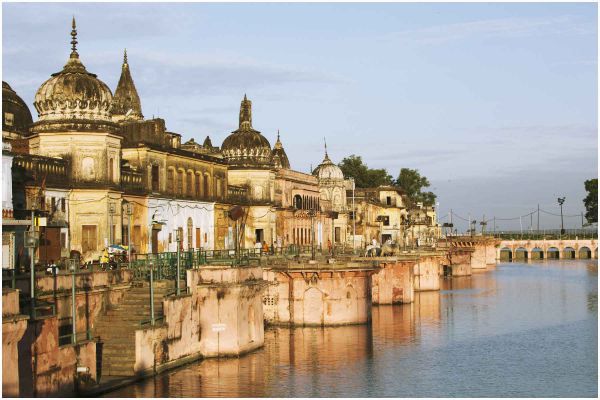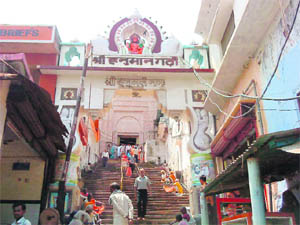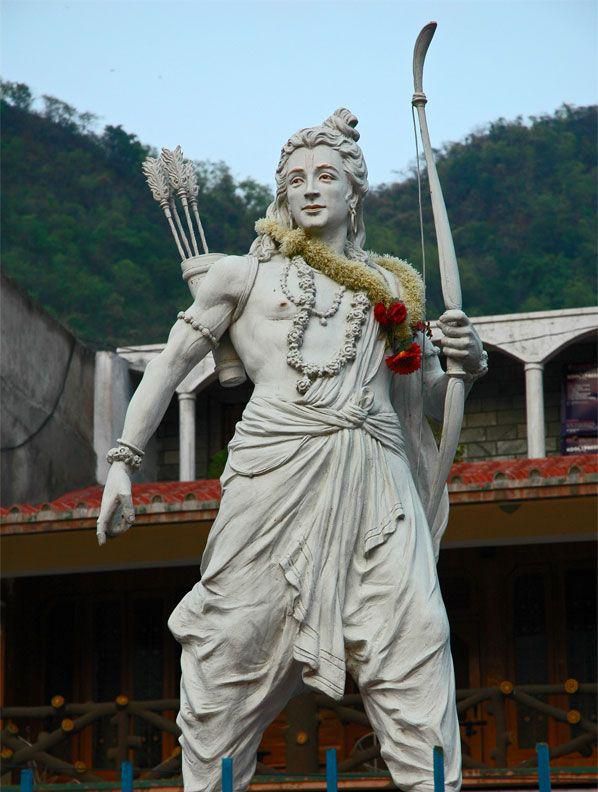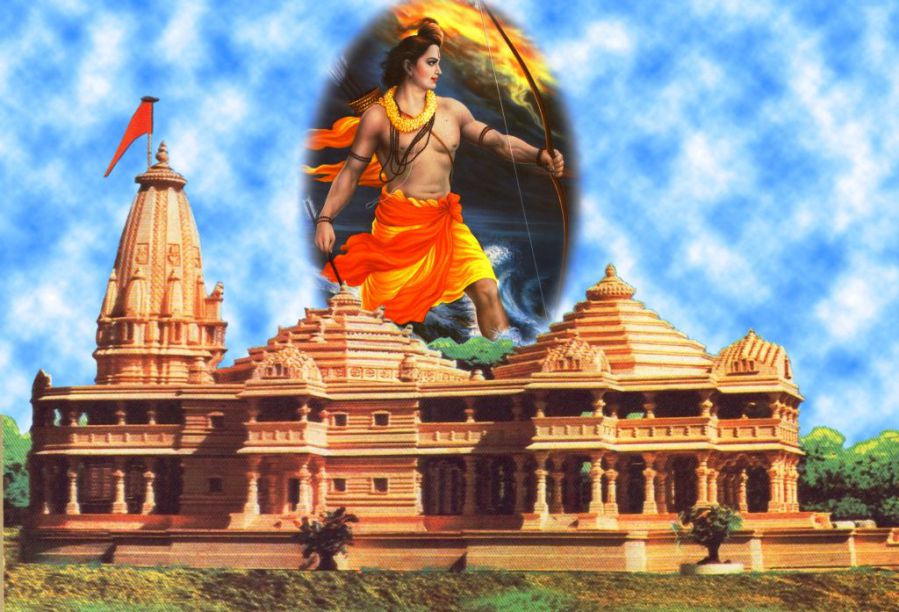No products in the cart.
When I went to Ayodhya from Mathura, I was struck by the stark difference between the birthplaces of Rama and Krishna. While Ayodhya is green, unpolluted and peaceful, the entire Brajbhoomi — spanning Mathura, Agra and Bharatpur where Krishna lived and played — is a dirty concrete jungle, exploding with people and vehicles. While the waters of the River Sarayu are clear, the Yamuna is choking with toxins and plastic.
If you are used to the greedy pandits or temple priest of Brajbhoomi, who will curse if you fail to drop an Rs 10 note in his hands, be prepared to be floored by the mild-mannered pandits of Ayodhya. He will welcome you with a smile and offer you prasadam and charanamrit, whether you offer money in the temple or not.
While you are still getting used to the contrast between Ayodhya and Brajbhoomi, you wonder why the people of Ayodhya are such a contented lot.
Swami Girishanandji, a resident of Vrindavan and a devotee of Rama, offers a plausible explanation. “Rama was Maryada Purushottam, righteousness personified. He lived a disciplined life. He obeyed his step-mother Kaikeyi’s orders. Like an innocent child, he agreed with all and was neither elated nor depressed. The source of pleasure lay within him and this inner peace echoes in Ayodhya even today.
Krishna crossed all limits and followed no rule and it is reflected in the Brajwasi’s behavior, but they forget that to break rules, you first have to master them; otherwise it can cause problems.”
Looking for fast food? Sorry, the people here cringe at the very mention of pizzas and sandwiches. Unlike his counterpart in Brajbhoomi, the rickshaw puller of Ayodhya will plead with pilgrims to occupy his rickshaw and will never overcharge. If temples in Brajbhoomi are illuminated and decorated, you will find the 7,000 temples of Ayodhya dimly lit with a sober Rama and a demure Sita sitting thoughtfully on their thrones.

The still, blue stretch of the Sarayu transports one to Treta Yuga where the four sons of King Dashrath bathed each morning. The water is clear and inviting. But where are the pilgrims, I asked the boatman. “Didi, come during Ram Navami, Ram Vivah or during the month of Shravana. You will find lakhs of pilgrims. Our Rama is no less than Krishna”, he says with a smile on his face. His reply is touching. If after so many yugas, their loyalty is so strong, then Rama must have left an enduring, inspiring impression.
In Nandi gram, 20 km from Ayodhya, is Bharat Kund. When Rama asked Bharata to administer Ayodhya while he was serving his 14-year exile term, the younger brother performed severe austerities. He meditated in a subterranean cave, with no human contact for 14 years. As he wished to remain on a lower pedestal, the Bharat Kund cave is now a temple dedicated to Bharata.

Located in the centre of Ayodhya is Hanuman Garhi, a large temple that looks more like a fort. It is actually a cave temple, which can be approached by a flight of 76 steps. The priests here told us that when Rama ended his mortal play and entered the Sarayu, he asked Hanuman to stay back and guide people about dharma. “Wasn’t it Hanuman who wanted to stay back,” I asked. The priest said, “No. How can Hanuman, who always complied with even the smallest of Rama’s wishes, impose his desire on his master? Rama wanted Hanuman to stay back.” The priest continued, “Sita wished that Hanuman — being an ideal devotee — must have a higher place than the master. Hanuman Garhi, therefore, stands at an elevation.”
Nearby is Kanak Bhavan or the golden palace, which Kaikeyi gifted to Sita when she saw the new bride for the first time. One is wonderstruck at the chaotic drama that happened eons ago — a loving queen gifts a palace made of gold and then throws the inmates out. Who can understand human emotions?
We end our tour with Guptdwar, the secret door from where Rama entered the Sarayu. It is believed that a ratha or chariot descended from the skies and took Rama’s entourage to Saket, his cosmic abode. With a lump in my throat, I bathed in the Sarayu, which had been witness to god’s leela or Divine Play. I pray for strength to help us overcome life’s challenges and live in equanimity as did Rama and Sita.
Tulsidas is said to have begun the writing of his famous Ramayana poem Shri Ramacharitramanas in Ayodhya in 1574 CE. Several Tamil Alwar mention the city of Ayodhya. Ayodhya is also said to be the birthplace of King Bharata (The First Chakravarti King), Bhahubali, Brahmi, Sundari, King Dashrath, Acharya Padaliptasurisvarji, King Harish Chandra, Shri Rama Achalbhrata, and the ninth Gandhara of Mahavir Swami.
Ayodhya is also the birth place of five Tirthankars, including the first Tirthankars of Jainism, Shri Rishabh Dev. He is known as the father of Jain religion. The city is also important in the history and heritage of Buddhism in India, with several Buddhist temples, monuments and centers of learning having been established here during the age of the Mauryan Empire and the Gupta Dynasty. Ayodhya reached its glorious peak as known to history during the reign of the Gupta’s over India.
The Thai kingdom and city of Ayutthaya, and the Indonesian sultanate of Yogyakarta, were named after Ayodhya, reflecting the common Southeast Asian practice of adopting place names from Hindu kingdoms.
According to an 11th century Korean chronicle the Samguk Yusa, the wife of King Suro of the ancient Korean kingdom of Geumgwan Gaya was a princess who traveled by boat from a faraway land called Ayuta to Korea in 48 CE. It is commonly thought that Ayodhya is the foreign land referred to in the Korean chronicles, but some scholars believe that the foreign land may have been Ayutthaya of Thailand. The Koreans know the princess as Hoe Hwang-ok, who was the first queen of Geumgwan Gaya and is considered an ancestor by several Korean lineages.

Hindu tradition and scriptures states that, this place & other places in Ayodhya were discovered, excavated & rebuilt by the king Vikramaditya’s as it was during the tenure of Lord Rama. It is said that Lord Rama appeared in king Vikramaditya’s dreams & showed him the very powerful & prosperous city of Ayodhya with all its glory & richness during his times. He then instructed the king to rebuild the city of Ayodhya as it was. King Vikramaditya expressed his inability to rebuild such a magnificent city again with all its riches but promised to rebuild this city as per his abilities. He then, as per the lord’s instructions, carried out large scale archeological excavations, at different locations in Ayodhya & reinstalled the temples & other places of importance in Ayodhya. The city of Ayodhya holds immense historical & spiritual importance.
Historians have identified this place to be Saketa, a key Buddhist centre during the 5th century BC (it is a widely held belief that Buddha visited Ayodhya on several occasions) which it remained till the 5th century AD. In fact, Fa-hien, the Chinese monk, kept record of several Buddhist monasteries that he saw here.
In the 7th century AD, Xuan Zhang (Hiuen Tsang), the Chinese monk, recorded spotting many Hindu temples in Ayodhya. In the epic Ramayana, the city of Ayodhya is cited as the birthplace of Lord Sri Rama or Ram Janmabhoomi, a Hindu deity who was worshipped as Lord Vishnu’s seventh incarnation. Ayodhya became a famous pilgrimage destination in the 1400s when Ramananda, the Hindu mystic, established a devotional sect of Rama.
The 16th century witnessed a shift in power with Ayodhya coming under the rule of the Mughal Empire. Ayodhya was annexed in 1856 by the British rulers. Between 1857 and 1859, this place was one of the main centers where the sparks of the first war of Indian Independence originated. These sparks later led to a nationwide revolt of the Indian soldiers in opposition to the British East India Company that began in Calcutta.
Amongst the ‘MOKSHDAYANI PURIS’ of the world meaning “the lands of spiritual bliss & liberation from the karma-bandhan” Ayodhya city holds the top spot, apart from cities like Varanasi, dwaraka & others. Ramcharitmanas & other respectable Hindu scriptures like ‘Vishnu Puran’, ‘Shrimad Bhagvat Mahapuran’ & others emphasize the importance of living & visiting such religious places. According to them these spiritually charged cities increase the PUNYA meaning “fruits of Virtuous & Righteous actions” & PAAP meaning “fruits of a person’s wrong doings” of an individual manifold. Therefore people visiting & living in such holy cities are found doing noble & virtuous deeds.
In spite of all the trouble Ayodhya has seen it has still managed to retains its beauty and serenity.






